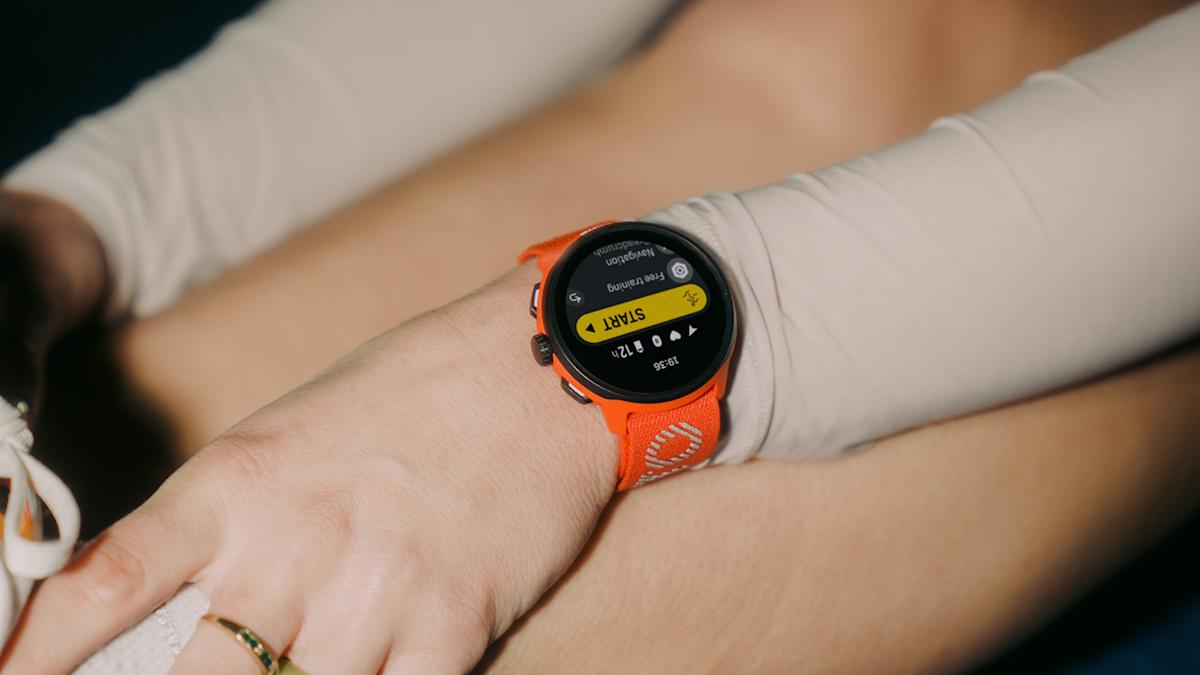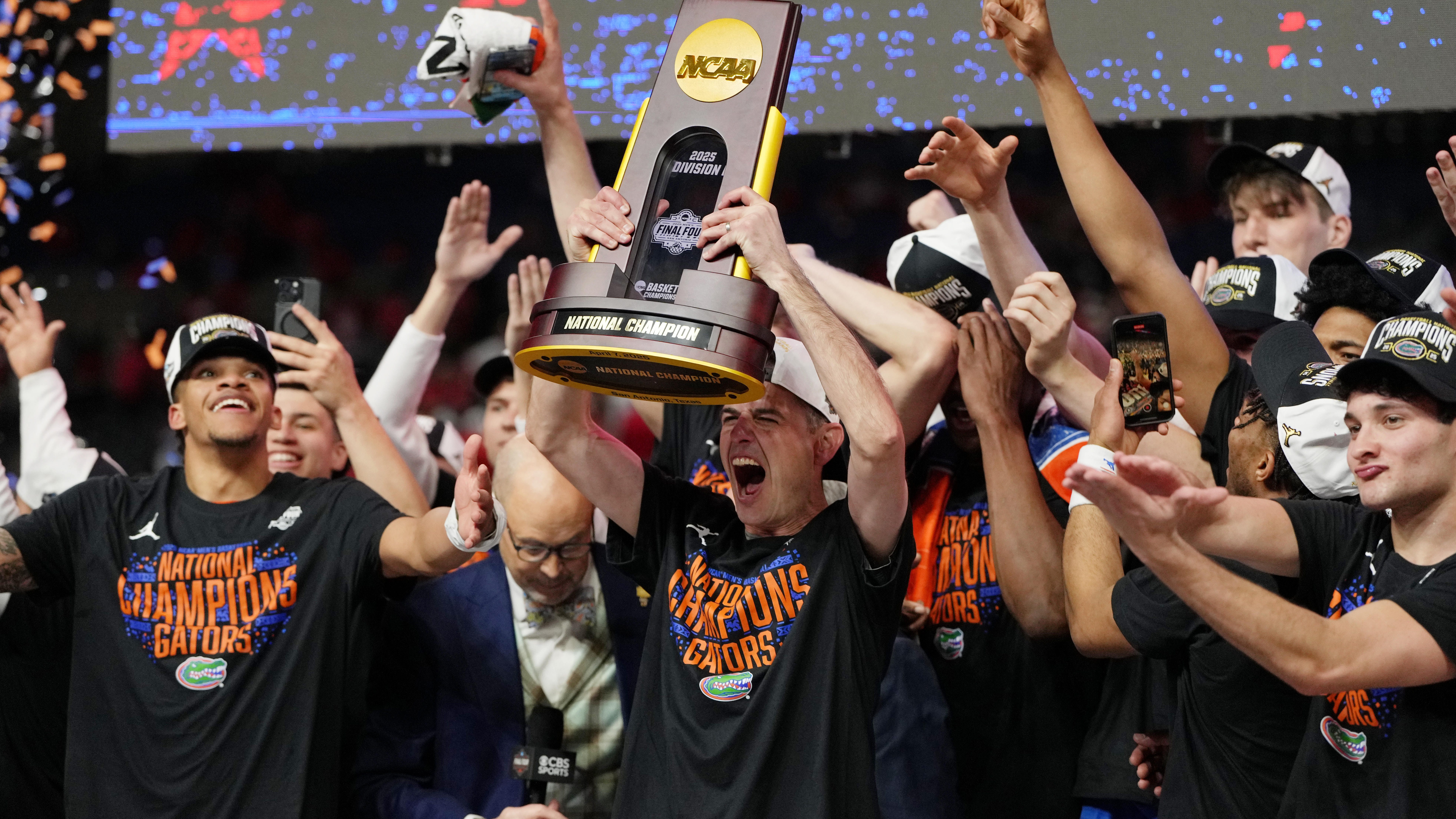Technology
Tech Trends Transforming the Way We Connect and Communicate
In the last decade, technology has dramatically reshaped how humans interact. From instant messaging to immersive virtual environments, the boundaries of connection have expanded beyond geography and time zones. The growing influence of artificial intelligence, the rise of decentralization, and the evolution of digital platforms are revolutionizing communication norms, behaviors, and expectations. As these advancements […]

In the last decade, technology has dramatically reshaped how humans interact. From instant messaging to immersive virtual environments, the boundaries of connection have expanded beyond geography and time zones. The growing influence of artificial intelligence, the rise of decentralization, and the evolution of digital platforms are revolutionizing communication norms, behaviors, and expectations. As these advancements continue to unfold, the world is witnessing a fundamental shift in how people form relationships, build communities, and share ideas.
1. The Shift to Real-Time, Cross-Platform Communication
Traditional communication methods, such as phone calls and emails, have been largely supplanted by instant messaging apps, live video tools, and collaboration platforms that support cross-device synchronization. These systems allow users to move seamlessly between mobile, desktop, and wearable devices without losing context. This shift has increased responsiveness and enabled global communication with unprecedented ease.
Furthermore, voice-to-text and speech recognition technologies now enhance accessibility, allowing individuals with disabilities or language barriers to participate more fully in digital conversations. Real-time translation tools are also narrowing linguistic gaps, enabling smoother international dialogue and remote teamwork.
2. The Role of Artificial Intelligence in Streamlining Interactions
AI plays a crucial role in enhancing communication. Natural language processing enables machines to understand, interpret, and generate human language with increasing accuracy. Chatbots and virtual assistants, for example, now handle millions of customer interactions daily, resolving queries, guiding purchases, and delivering personalized content.
More sophisticated AI moderation models can now predict conversation patterns, detect emotional cues, and even auto-generate summaries of discussions, which improves workplace efficiency and ensures key points are never lost. Sentiment analysis also allows businesses and content creators to gauge audience reactions and tailor messaging strategies accordingly.
3. The Growth of Immersive Technologies
Augmented Reality (AR) and Virtual Reality (VR) are pushing the boundaries of interaction by creating spaces where communication feels more human. These technologies are gaining traction not only in entertainment but also in education, training, therapy, and business meetings. Immersive environments enable users to engage with one another in spatially aware settings, simulating the nuances of in-person conversations.
In corporate settings, VR-powered meetings can mimic real-world interactions, reducing the fatigue often associated with traditional video calls. In educational contexts, students in different countries can now collaborate on virtual field trips or labs, gaining global perspectives in real time.
4. Decentralization and Privacy-Centric Communication
Amid growing concerns about data privacy and digital surveillance, decentralized communication tools have gained popularity. These platforms operate without centralized servers, allowing users to maintain greater control over their data and interactions. Blockchain-based messaging apps and peer-to-peer networks are offering new levels of encryption and privacy assurance.
Users are increasingly seeking systems that prioritize consent, anonymity, and data integrity. This trend reflects a broader societal demand for digital autonomy and security. As more people adopt these alternatives, traditional models of communication may face pressure to evolve and offer similar safeguards.
5. The Emergence of Asynchronous Communication Models
With the rise of global remote work and digital nomadism, asynchronous communication has become more important. Instead of requiring all parties to be present simultaneously, asynchronous tools allow users to send messages, videos, or recordings that can be accessed and responded to at different times.
This approach respects different time zones, reduces pressure for immediate responses, and fosters more thoughtful, deliberate conversations. Asynchronous communication is now embedded in project management software, team collaboration platforms, and even in emerging educational environments.
6. Intelligent Moderation and Digital Wellbeing
As more people engage online, the need to maintain healthy, respectful digital environments becomes increasingly vital. Modern communication tools are now incorporating content analysis and filtering systems to identify hate speech, spam, harassment, and other violations.
The development of AI-powered content moderation platform technologies has been central to this effort. These tools not only detect inappropriate content but also adapt based on context, language variation, and cultural nuance. In parallel, strategies rooted in trust and safety consulting have helped platforms design user experiences that prioritize psychological safety, digital well-being, and ethical transparency.
7. The Democratization of Content Creation
Advances in mobile technology and social media platforms have allowed virtually anyone to become a content creator. Video blogs, podcasts, and live streams have become integral forms of communication, enabling individuals to reach global audiences with minimal equipment.
Short-form video, in particular, has gained massive influence, fostering direct and interactive engagement. Algorithms curate personalized content streams that keep users engaged and blur the lines between personal communication and mass media. This shift has empowered grassroots movements, marginalized voices, and independent educators, reshaping the flow of information and social influence.
8. Hyper-Personalization of Communication Channels
One of the most significant trends in modern communication is hyper-personalization. Machine learning models analyze user behavior, preferences, and interaction history to deliver customized messages, recommendations, and interactions.
This trend is most visible in email marketing, app notifications, and chat systems that tailor responses to the individual. While this level of personalization can enhance relevance and engagement, it also raises questions about data ethics, manipulation, and user consent.
Organizations must balance personalization with transparency, ensuring users understand how their data is used and have the ability to opt out of intrusive practices.
9. Communication in the Age of the Metaverse
The concept of the metaverse—a persistent, shared digital space combining physical and virtual reality—is set to transform how people communicate. Early applications include virtual meeting rooms, interactive workspaces, and social hubs where users can engage through avatars.
These environments promote presence, collaboration, and creative expression in ways that traditional tools cannot. Although still in early development, the metaverse has the potential to redefine digital identity, introduce new social protocols, and reshape how individuals connect across space and culture.
10. Ethical and Regulatory Considerations
With new communication technologies come new responsibilities. Issues such as digital addiction, misinformation, and algorithmic bias require careful oversight. As governments and institutions work to regulate online spaces, communication platforms must anticipate and adapt to changing legal and ethical frameworks.
Transparency in algorithm design, robust data protection measures, and ethical AI development are now core expectations. Public trust hinges on how responsibly communication technologies are built and managed.
11. The Role of Emotional Intelligence in Digital Communication
While technology facilitates more efficient connections, emotional intelligence remains essential. Digital tone, timing, and nonverbal cues can easily be misinterpreted, leading to friction or misunderstandings. Tools that help convey emotional context—like emojis, GIFs, and visual reactions—bridge some of these gaps.
More advanced communication tools now use sentiment detection to adjust responses and flag potential conflicts. In educational and therapeutic settings, such tools are being explored to support mental health and conflict resolution.
12. The Rise of Voice-Based Interfaces
Voice-based communication interfaces are becoming increasingly common, especially with the integration of smart assistants into daily life. Users now interact with devices using spoken commands, conducting searches, setting reminders, or sending messages with minimal physical input.
This trend has implications for accessibility, reducing friction for users with disabilities or limited literacy. It also introduces new dynamics in how people multitask and interact with digital environments, reinforcing the importance of voice design in communication strategies.
13. Automation in Professional Communication
Automated workflows have entered professional communication in a big way. Automated meeting schedulers, summary generators, email response suggestions, and customer service tools are helping businesses streamline internal and external interactions.
These systems reduce human workload while ensuring consistency, accuracy, and timely follow-ups. However, over-reliance on automation can reduce authenticity, so a balance is essential. Organizations must ensure that automation serves to support—not replace—meaningful human connection.
14. Gamification and Engagement
Gamification elements are increasingly being used to enhance user engagement across communication platforms. Points, badges, leaderboards, and rewards systems can increase participation and motivation, especially in learning, training, and social media environments.
This trend reflects a deeper understanding of behavioral psychology and its application in design. Gamified communication experiences can encourage positive behavior, foster community engagement, and support long-term habit formation.
15. Looking Ahead: The Future of Digital Connection
The next frontier in communication will likely involve a fusion of biological and digital systems. Brain-computer interfaces (BCIs), biometric communication triggers, and even emotion-driven user interfaces are being researched and tested. These developments aim to create faster, more intuitive forms of connection that bypass traditional language altogether.
While promising, such innovations raise profound questions about identity, consent, and the limits of human-machine integration. As society advances toward these possibilities, inclusive dialogue and ethical foresight will be critical in shaping a future where technology enhances—rather than erodes—human relationships.
Conclusion
Technology continues to redefine how people connect, collaborate, and communicate. From AI-enhanced interactions and immersive environments to decentralized platforms and emotional intelligence tools, the pace of change is reshaping every aspect of human interaction. While these innovations present powerful opportunities, they also demand thoughtful consideration around privacy, trust, and inclusivity.
Navigating this new landscape will require a commitment to ethical design, adaptive strategies, and continuous learning. By understanding the trends shaping digital communication today, individuals and organizations can build more meaningful, secure, and human-centered ways to connect in the future.
Related
Technology
Dream Sports To Invest $50 Mn In Cricbuzz & Willow TV
SUMMARY As a part of this investment, Dream Sports will also pick up a minority stake to deepen its play in the cricket content and broadcast ecosystem The move aims to deliver interactive and AI-powered fan experiences globally, while also exploring product-level integrations across live stats, personalised content, commerce experiences, and interactive match streams Earlier […]

As a part of this investment, Dream Sports will also pick up a minority stake to deepen its play in the cricket content and broadcast ecosystem
The move aims to deliver interactive and AI-powered fan experiences globally, while also exploring product-level integrations across live stats, personalised content, commerce experiences, and interactive match streams
Earlier in March, the company shifted its domicile from the US to India via a reverse merger, using Indian government’s fast-track route for cross-border mergers
Dream Sports, the parent entity of fantasy gaming platform Dream11
On the back of this investment, Dream Sports will also pick up a minority stake to deepen its play in the cricket content and broadcast ecosystem.
The move aims to deliver interactive and AI-powered fan experiences globally, while also exploring product-level integrations across live stats, personalised content, commerce experiences, and interactive match streams.
Cricbuzz is a cricket news and information website, claiming to have over 185 Mn monthly users. Willow TV, on the other hand, is a cricket broadcaster that streams over 1,500 matches annually across the US, Canada, and expanding markets such as the Middle East and Southeast Asia.
Dream Sports’s cofounder and CEO Harsh Jain said, “With this investment, all cricket fans can expect much more fan engagement, interactive streams, and integrated commerce experiences that will bring them closer to the action and to each other.”
Avendus Capital acted as the exclusive financial advisor for the deal.
This move comes as Dream Sports continues to expand its global footprint. Last week, the company joined the ownership group of English football club Salford City FC, part of a consortium led by football legends David Beckham and Gary Neville, along with business leaders Declan Kelly and Lord Mervyn Davies.
Besides Dream11, Dream Sports also operates FanCode, a digital sports content and commerce platform, and DreamSetGo, which offers curated sports travel experiences.
Dream Sports’ India Gameplay
Earlier in March, the company shifted its domicile from the US to India via a reverse merger, becoming one of the first new-age firms to utilise the Indian government’s fast-track route for cross-border mergers.
This “reverse flipping” trend aligns with a broader movement among Indian startups such as PhonePe, Groww, Zepto, Flipkart, and Razorpay, which are relocating their domiciles to India in eyeing public listings. However, in its explanatory statement filed with the MCA for this domicile shift, Dream Play didn’t disclose any plans for a public listing yet.
Back in 2021, reports suggested that Dream Sports was eyeing a $1.5 Bn US IPO by 2022, a plan that ultimately did not materialise.
More recently, another real money gaming startup, Zupee’s cofounder, told Inc42 that despite the ongoing startup IPO boom, it is unlikely that a gaming company would go for a public listing before there is clarity on regulations.
The company continues to capitalise on the IPL season. This year, it has launched a celebrity campaign featuring actors Aamir Khan and Ranbir Kapoor, along with top cricketers like Rohit Sharma, Hardik Pandya, KL Rahul, Jasprit Bumrah, Suryakumar Yadav, Rishabh Pant, and R Ashwin.
During IPL 2024, Dream Sports added 1.1 Mn users on the very first day and recorded 15 Mn concurrent users, cofounder Harsh Jain said on X.
Founded in 2008 by Jain and Bhavit Sheth, Dream Sports’s Dream11 is a real-money gaming (RMG) platform that enables users to create virtual teams based on real players and win cash prizes based on their on-field performance.
However, like many RMG platforms, Dream11 have been impacted by the imposition of 28% GST on the full bet value. In October 2023, the DGGI issued the company a GST notice worth INR 28,000 Cr, with total claims reportedly touching INR 40,000 Cr.
More recently, the government reiterated to the Supreme Court that any online game with monetary stakes, regardless of whether it’s a game of skill or chance, should be taxed as gambling under the GST regime at a 28% rate.
While its FY24 numbers are yet to be disclosed, Dream Sports reported a 32% rise in net profit in FY23 to INR 187.8 Cr, with operating revenue climbing 66% to INR 6,384.5 Cr.
Technology
The Suunto Run is built for the Strava generation
When you buy through links on our articles, Future and its syndication partners may earn a commission. Credit: Suunto Running has changed, and Suunto knows it. Once seen as the preserve of club athletes and endurance obsessives, running today is as much about connection, self-expression, and community as it is about competition. Suunto’s new Run […]

When you buy through links on our articles, Future and its syndication partners may earn a commission.

Credit: Suunto
Running has changed, and Suunto knows it. Once seen as the preserve of club athletes and endurance obsessives, running today is as much about connection, self-expression, and community as it is about competition.
Suunto’s new Run watch is made for this moment: light, simple, smart, and built with the Strava generation in mind.
The new running watch strips things back to what runners actually use, while still packing in smart tools to elevate every run.
It ditches ultra-adventurer frills like offline maps and instead focuses on what matters when you lace up: pace, motivation, recovery, and freedom from your phone.
At just 36 grams, it’s Suunto’s lightest watch yet. Add a 1.32″ AMOLED screen and a refreshed UI, and you get a performance wearable that’s friendly to new runners and satisfying to seasoned racers.

Credit: Suunto
Add built-in music storage, 20-hour dual-band GPS tracking, and full Bluetooth workout headphone compatibility, and you’ve got a device that genuinely lets you leave your phone at home.
“Today, the internet, data sharing, and wearable sports technology enable new forms of community, connection, competition, and self-knowledge,” says social scientist Dr. Neil Baxter, who consulted on the project. “Running has become an enriched part of modern culture.”
Built to motivate, not just measure
That enrichment is reflected in the data, too. The Suunto app provides post-run analysis and recovery guidance and syncs to over 300 third-party platforms, including Strava, TrainingPeaks, and Komoot.
The Run also provides Training Load and heart rate recovery stats, as well as a suite of recovery tools to help you train smarter, not harder.
Suunto Run also supports 34 sports beyond running (from strength to cycling to yoga), but make no mistake: this is a runner’s watch.
The brand added a track mode, which we’ve seen cropping up in running-forward wearables more and more in recent years.
In a world of do-everything multisport monsters, the Suunto Run is refreshingly specific. It’s not trying to climb Everest. It just wants to help you crush your next 5K, beat your best time on that hill segment, or keep your run streak alive.
The Suunto Run sells for a meagre £199 in the UK and €249 in Europe – US and AU prices TBC. It will be available to buy in the EMEA region from 3 June 2025.
For more info, head over to Suunto.
Technology
NFL will measure first downs with Hawk-Eye with after Sony’s tech agreement
The NFL will use Hawk-Eye technology to measure the first downs in a game, replacing the chain measurements that have become slightly outdated considering the available tech nowadays. The Hawk-Eye tech will be provided by Sony. Sony have partnered with just about every major sport in the world to innovate by using their advanced technology […]

The NFL will use Hawk-Eye technology to measure the first downs in a game, replacing the chain measurements that have become slightly outdated considering the available tech nowadays. The Hawk-Eye tech will be provided by Sony. Sony have partnered with just about every major sport in the world to innovate by using their advanced technology in real time to assist the officiating. The NFL has an established relationship with Sony since 2021 when they adopted the SMART system to combine video feeds from all of the NFL’s broadcast partners in one place. Now they have taken it a step further.
What kind of changes will the NFL implement for the future of the sport?
The NFL is evolving. To everyone’s benefit, the league has considered the ever changing reality of modern day life. The pace and innovations happening in the tech sector daily is unlike anything in history. Sony has been on the forefront of that innovation for generations now. One aspect of their business model that has served the sporting world well is their cameras.
When we consider the range of products that Sony are leading the markets with, we can understand the dominance they have in the sporting world. Sony started producing cameras in the 80’s and since then they have established themselves as a serious competitor in the camera arena. The NFL have been using their cameras in the SMART(Synchronized Multi-Angle Replay Technology) since 2021.
Sony’s incredible 8k cameras have enabled them to dominate the sport sector as they have partnerships with with 23 of the top 25 global sports leagues. Their cameras are used in soccer, tennis Grand Slams, cricket major tournaments and the Rugby World Cup. The sporting world has taken advantage of the advancements in camera technology to assist with the officiating process.
How will the NFL use Sony’s camera’s to assist the officials?
The change comes in the measuring of the first downs. The chain crew have become an icon of the game of football. The tension when the chain crew runs onto the field to measure would have millions of fans on the edge of their seats. That process will now be handled by the new Sony system specifically designed to measure the distance between the ball and first down.
The chain crew will remain on the field in a secondary capacity while the officials make use of the new Sony system being controlled from the NFL’s Art McNally GameDay Central Officiating Center (AMGC) in New York. So the adoption is a seamless and smooth transition that will benefit the sport tremendously. As with other sports, the game of football is taking full advantage of the tech available to them.
After this years annual draft and the drama that it inevitably brings, the NFL and its fans are ready to start the new season. And this year will be the first season to use the new Sony system after conclusive testing took place last year to confirm the technology’s viability. Those tests were obviously successful as the league claims measurements could be up to 60% faster this year.
What will the 2025 season have in store for the NFL and its fans across the world?
The discussion topic right now in the halls of the NFL is all the rookies and their potential. The NFL is evolving along with modern day society. The international expansion has brought a legion of fans into the sport. The standard of officiating in international sport has been improving with the use of these types of systems. Improving fairness and encouraging engagement from the fans. Long gone are the days when fans would debate over a call that changed the outcome of a game due to a mistake on the part of the officials.
Technology
Real-life companies pump up promotions around fictional team in new ‘F1′ movie
The real-life companies that will be sponsors in the fictional F1 movie are preparing for what they hope will be a boon for their businesses as the premiere of the forthcoming film draws closer. The movie, simply called “F1,” will hit theaters internationally June 25 and in North America on June 27. Since the plot […]

The real-life companies that will be sponsors in the fictional F1 movie are preparing for what they hope will be a boon for their businesses as the premiere of the forthcoming film draws closer. The movie, simply called “F1,” will hit theaters internationally June 25 and in North America on June 27. Since the plot revolves around an F1 team, Apple Original Films worked to land real companies that would provide their brand to the film as sponsors of the fictional team to give it an extra bit of authenticity. Sponsors of the fictional APX (pronounced Apex) GP team include Mercedes-Benz, EA Sports, Expensify, SharkNinja, Geico, IWC and Tommy Hilfiger. Expensify, the expense tracking software company, called out the sponsorship during its Q1 earnings report last week as “possibly one of the best brand placement opportunities ever.” Sign-ups to Expensify quadrupled for a few hours last week after actor Damson Idris wore a firesuit, with Expensify’s logo prominently featured, to the Met Gala as part of a stunt with Tommy Hilfiger, according to CEO David Barrett. Barrett added in a note to investors that “this gives us incredible exposure on a global basis …. Accordingly, we are battening down the hatches in preparation for what we hope will be a wave of new leads that puts our servers, sales team, and customer success to the test.”
WAITING FOR IMPACT: S.F.-based Expensify said it has been making payments on the sponsorship “for a while,” but that it has yet to record them in earnings, so the cost remains unknown. The impact from the sponsorship will likely be felt in Q3 of this year. Expensify will record the expense the day the movie comes out, according to a transcript of what company executives said during the Q1 earnings call last week. In the movie, both road cars and the race cars driven are Mercedes, and the German carmaker also provided the safety car that is used in filming. To commemorate the movie, Mercedes announced during F1 Miami race weekend earlier this month that it will sell a limited-edition AMG GT63 APXGP Edition road car. The company is making only 52 of the 577-horsepower cars, which Car And Driver magazine expects to sell for more than $191,550, the starting price of a normal GT63. The car has gold accents to match the fictional team’s colors, and the floor mats are embroidered with the lettering “APXGP.” The center console has a badge that notes which of the 52 it is. On Mercedes-Benz USA’s website, the company has a special page for the car, along with a link to buy similarly modeled vehicles.
AS SEEN IN ‘F1′: For EA Sports, it is naturally using the movie to promote the next edition of its officially licensed F1 video game. The company says fans who pre-ordered the “F1 25” game’s “Iconic Edition” by a certain period will get access to special gameplay chapters inspired around the movie. Meanwhile, Tommy Hilfiger’s stunt with Idris at the Met Gala drew attention to the film and went viral on social media, with the company saying it was a “moment that fused high fashion with cinematic glamour.” Along with the APXGP firesuit, Idris walked the red carpet with a specialized racing helmet featuring 20,0000 Swarovski crystals attached in red, white and blue colors. Elsewhere, IWC, the longtime Mercedes AMG Petronas F1 Team sponsor, will have its watches worn by Brad Pitt and others in the film. It has released a couple timepieces around the movie including a $7,000 Pilot’s Watch Chronograph APXGP that has gold accents. IWC brought one of the cars used in filming to the Goodwood classic car show in the U.K. and Idris showed up alongside actress Kerry Condon to discuss their roles in the movie. Finally, F1 was selling APXGP merchandise at the F1 Miami race weekend in early May.
Technology
University of Florida looks at how coaches use data to help players
Dave Schlenker | University of Florida See the moment courtside in the Alamodome that Florida basketball won the national title The Gators defeated Houston 65-63 Monday night at the Alamodome in San Antonio to win the program’s third national championship. Two University of Florida engineering graduate students presented research at a conference in Japan on […]


See the moment courtside in the Alamodome that Florida basketball won the national title
The Gators defeated Houston 65-63 Monday night at the Alamodome in San Antonio to win the program’s third national championship.
- Two University of Florida engineering graduate students presented research at a conference in Japan on how coaches use data to improve athletic performance.
- The students’ research focused on how coaches in collegiate athletics utilize data from wearable sensors and other technology.
- The research found that coaches use data to make decisions about training, strategy, and injury prevention.
Shortly after the confetti settled over the University of Florida’s basketball championship in April, two graduate students studying artificial intelligence traveled to Japan to discuss how coaches are using data and technology to maximize player performance and safety.
Accomplished athletes themselves, UF engineering students Mollie Brewer and Kevin Childs are co-primary investigators on a paper exploring how coaches analyze data — often from wearable sensors — to shape training and strategy and, ultimately, win more games.
If a player comes off an intense workout, for example, coaches can look at the data and determine if that player needs rest before the next game. This means successful coaches — like those coaching the championship basketball team — are adding “data analyst” to their roles.
Brewer and Childs’ paper was selected for presentation at the renowned Association for Computing Machinery CHI conference in Yokohama, Japan, which ran April 26 to May 2. It was a big deal, not just because UF students are getting an international spotlight on their AI in athletics research but also because the pair’s very first research paper was chosen for a highly competitive world conference.
“This is a look into how coaches use technology within collegiate athletics,” Childs said. “We have a lot of studies talking to recreational athletes. We have some studies within the human computer-interaction area looking at professional sports. But we don’t really have an understanding of how technology is used in systems like collegiate athletics.”
Brewer added: “And we’re not going to lie, bringing it to a conference on the back of a national championship is even more exciting.” Brewer and Childs are Ph.D. engineering students and key players in the $2.5 million UF & Sport Collaborative initiative that, among other things, explores how AI data can maximize athletic performance and reduce injuries.
Known as the AI-Powered Athletics project, this partnership between the Herbert Wertheim College of Engineering and the University Athletic Association (UAA) delves deep into wearables such as fitness trackers and other sensors attached to athletes to provide information for AI databases.
“This paper was on the coach’s perspective of what types of technology and data are being used in collegiate athletics,” Brewer said. “We’re presenting how the landscape of data flows in this environment and also finding the opportunities to improve technology and data usage among these top-level coaches.”
The researchers worked with five teams and 17 coaches. For privacy, they were not able to reveal what teams participated.
But a March article on floridagators.com reported UF’s basketball team utilizes data for decisions on the court and in training. Heading into the SEC Tournament in March, for example, coaches used the data to increase intensity at practices to ensure optimum stamina if the team had to play three games in three days (which it did).
As data analysts, coaches are figuring out what the numbers mean for individual athletes, particularly the relationship between intensity and injury.“They’re intaking data from dozens of sources and processing this to figure out the optimal training plan,” Childs said. “For example, there are GPS IMUs — inertial measurement units — being worn by a lot of student athletes. They are little vests with sensors between the shoulder blades. It captures all their position data, how fast they jump, how fast they’re moving.”
Another conclusion: Coaching is not a one-person job in collegiate athletics.
“There’s an entire interdisciplinary team, and that information is shared among everybody to make decisions, and sometimes the same technology output is used by different roles,” Brewer said. “A dietician may use it one way. An athletic trainer may use the output for return to play, but they’re all communicating together.”
Brewer is a cyclist, and Childs was a competitive swimmer. They know the ins and outs of competition and results. This research sharpens the competitive edge, that “last-second buzzer beater — anything you can do to get that extra 1%,” Childs said.“We are so proud of Mollie and Kevin’s innovative thinking and hard work,” said Kristy Boyer, a professor in UF’s Department of Computer & Information Science and Engineering, and one of collaborators on the paper. “This project exemplifies what can happen when university faculty and innovators within the athletic association come together with a common goal.” In addition to Brewer, Childs and Boyer, the paper’s other collaborators include Kevin Butler from the Department of Computer & Information Science and Engineering, Garrett F. Beatty from UF’s College of Health and Human Performance, Spencer Thomas from the UAA, and Jennifer Nichols, Daniel Ferris and Celeste Wilkins from UF’s J. Crayton Pruitt Family Department of Biomedical Engineering.
As for exploring Japan?
“The experience was amazing,” Childs said. “Some of the highlights were traveling to random spots on a map with Mollie and trying out different food. Conveyor-belt sushi offered a fun game of guessing what variety of seafood was on the plate, and I think I satisfied my yearly quota of ramen consumption.”“We loved connecting with new faces at CHI and getting inspired by the exciting research on the horizon,” Brewer added. “After our presentation, we ran out to join our new friends for a jog around the bay, just in time to catch a rare view of Mt. Fuji at sunset. It felt like the universe’s quiet nod of ‘well done.’ ”
— Dave Schlenker is a public relations specialist for the University of Florida’s Herbert Wertheim College of Engineering.
Technology
Businesses, Families Get Boost in Tax Bill: Winners and Losers
Business, some workers, and parents would see tax breaks restored and credits boosted in the House Ways and Means Committee’s tax legislation that rolled out Monday. Largely extending the 2017 tax law, which skewed benefits toward wealthy individuals and corporations, the legislation has many provisions that companies pushed hard for. It also includes some of […]

Business, some workers, and parents would see tax breaks restored and credits boosted in the House Ways and Means Committee’s tax legislation that rolled out Monday.
Largely extending the 2017 tax law, which skewed benefits toward wealthy individuals and corporations, the legislation has many provisions that companies pushed hard for. It also includes some of the provisions President Donald Trump wanted, such as reducing income tax on overtime and tips. But it also has some new taxes—on university endowments and sports owners—and it cuts billions in energy credits.
While the House version of the tax bill is a long way from becoming law—the Senate hasn’t weighed in yet—it gives a first glimpse on what parts of tax policy are on surer footing and what’s in a more precarious spot.
Here’s who won and who lost in this first version of the tax bill:
Winners
Businesses: Tuesday’s tax bill calls for keeping corporate and international tax rates steady, restoring the expiring or expired trifecta of popular business breaks and a boost in the deduction for pass-through entities. The legislation represents a hard-fought victory for companies that pushed to return them to the 2017 tax law’s original levels.
Some workers and seniors: House Republicans took the first step to deliver on Trump’s campaign promises to ease the tax burden on some workers by eliminating tax on tipped and overtime wages. The legislation also includes a break for older Americans receiving Social Security benefits.
Parents and families: Tax writers proposed a $500 boost to the current $2,000 child tax credit and made more of the credit available to low-income families. They also called for raising the estate tax exemption to $15 million, making that a permanent floor, and floating it annually after 2025 with inflation..
Multinational Corporations: House Republicans’ bill preserved the tax rates on income US companies earn abroad. It’s a win for large companies with international presences that feared lawmakers would allow the rates to increase amid a search for revenue offsets. The legislation maintained a 10.5% effective tax rate on global intangible low-taxed income, a 13.1% rate on foreign-derived intangible income, and a 10% rate on the so-called base erosion and anti-abuse tax, or BEAT. Each of these rates would have increased in 2026 without congressional intervention.
Losers
Universities: House Republicans aim to increase the tax on large private university endowments, which presents a new threat to some of the wealthiest US schools. Republicans have aggressively pursued oversight on higher education for the past several years, and their proposal creates a tiered system that imposes larger taxes based on the size of their endowments. The top tax rate would grow to 21% in for institutions with student-adjusted endowments above $2 million.
Tax-and-climate law: Former President Joe Biden’s signature legislation known as the Inflation Reduction Act takes a serious hit in the House draft, as Republicans utilize some of its provisions for savings as they enact their tax law. The proposed legislation calls for clawing back hundreds of billions of dollars in energy credits by terminating a consumer credit for electric vehicles and credits for making homes more efficient. It also calls for phasing out and restricting energy production and investment credits, while modifying and extending biofuel production credits for four years.
Sports Team Owners: People who own sports franchises will only be able to write off half of the declining value of their franchises, a direct shot at Trump’s pledge to target “special tax breaks” for a corner of the billionaire class. The tax writers called for limiting Internal Revenue Code Section 197‘s amortization rules on intangible assets of franchises like football, basketball, baseball, hockey, and soccer to “50% of the adjusted basis.”
Direct File: If the proposed tax legislation were to become law, the free electronic filing program that allowed taxpayers to directly submit their federal return with the IRS would be dead within a month. Tuesday’s proposal calls on the Treasury Department to terminate the program within 30 days of enactment, and prescribes a task force to design a public-private partnership to replace the IRS’s existing free-filing options.
Headed to Overtime
State and Local Tax Deduction: One of the stickiest topics is the question of whether to lift the $10,000 federal cap on the state and local tax deduction, which has largely affected people living in high-tax states. The legislation proposes raising the SALT deduction ceiling to $30,000, but it would limit the write-off to taxpayers earning less than $400,000. While it’s triple the current cap, it’s not clear whether the blue-state Republicans pushing for a higher cap will accept it after some voiced their rejection of that figure after last week.
-

 Fashion3 weeks ago
Fashion3 weeks agoThis is poetry in motion.
-

 Rec Sports3 weeks ago
Rec Sports3 weeks agoDeputies investigating incident that caused panic at Pace youth sports complex
-

 NIL3 weeks ago
NIL3 weeks agoSave Like a Pro: NIL money isn’t free cash—taxes take a bite! Set aside part of …
-

 Sports3 weeks ago
Sports3 weeks agoHow to watch Yahoo Sports' NFL Draft Live show
-

 College Sports2 weeks ago
College Sports2 weeks agoDuke basketball's Isaiah Evans on 2025 NBA Draft early entry list
-

 Fashion3 weeks ago
Fashion3 weeks agohas always dreamed in Mercurial. Now his initials are on the boots. The new Kyl…
-

 Fashion2 weeks ago
Fashion2 weeks agoHow to watch Avalanche vs. Stars Game 7 FREE stream today
-

 High School Sports5 days ago
High School Sports5 days agoWeb exclusive
-

 Sports5 days ago
Sports5 days agoPrinceton University
-

 Sports5 days ago
Sports5 days ago2025 NCAA softball bracket: Women’s College World Series scores, schedule














 Marcus Morris Sr. claims Kawhi’s feared more than Steph | First Take
Marcus Morris Sr. claims Kawhi’s feared more than Steph | First Take








